- Home
- John Norman
Nomads of Gor Page 4
Nomads of Gor Read online
Page 4
The Wagon Peoples are fascinated with the future and its signs and though, to hear them speak, they put no store in such matters, yet they do in practice give them great consideration. I was told by Kamchak that once an army of a thousand wagons turned aside because a swarm of rennels, poisonous, crablike desert insects, did not defend its broken nest, crushed by the wheel of the lead wagon. Another time, over a hundred years ago, a wagon Ubar lost the spur from his right boot and turned for this reason back from the gates of mighty Ar itself.
By one fire I could see a squat Tuchuk, hands on hips, dancing and stamping about by himself, drunk on fermented milk curds, dancing, according to Kamchak, to please the sky.
The Tuchuks and the other Wagon Peoples reverence Priest-Kings, but unlike the Goreans of the cities, with their castes of Initiates, they do not extend to them the dignities of worship. I suppose the Tuchuks worship nothing, in the common sense of that word, but it is true they hold many things holy, among them the bosk and the skills of arms, but chief among the things before which the proud Tuchuk stands ready to remove his helmet is the sky, the simple, vast beautiful sky, from which falls the rain that, in his myths, formed the earth, and the bosks, and the Tuchuks. It is to the sky that the Tuchuks pray when they pray, demanding victory and luck for themselves, defeat and misery for their enemies. The Tuchuk, incidentally, like others of the Wagon Peoples, prays only when mounted, only when in the saddle and with weapons at hand; he prays to the sky not as a slave to a master, nor a servant to a god, but as a warrior to a Ubar; the women of the Wagon Peoples, it might be mentioned, are not permitted to pray; many of them, however, do patronize the haruspexes, who, besides foretelling the future with a greater or lesser degree of accuracy for generally reasonable fees, provide an incredible assemblage of amulets, talismans, trinkets, philters, potions, spell papers, wonder-working sleen teeth, marvelous powdered kailiauk horns, and colored, magic strings that, depending on the purpose, may be knotted in various ways and worn about the neck.
As we passed among the wagons I leaped back as a tawny prairie sleen hurled itself against the bars of a sleen cage, reaching out for me with its six-clawed paw. There were four other prairie sleen in the cage, a small cage, and they were curling and moving about one another, restlessly, like angry snakes. They would be released with the fall of darkness to run the periphery of the herds, acting, as I have mentioned, as shepherds and sentinels. They are also used if a slave escapes, for the sleen is an efficient, tireless, savage, almost infallible hunter, capable of pursuing a scent, days old, for hundreds of pasangs until, perhaps a month later, it finds its victim and tears it to pieces.
I was startled by the sound of slave bells and saw a girl, stripped save for bells and collar, carrying a burden among the wagons.
Kamchak saw that I had noticed the girl and chuckled, sensing that I might find it strange, seeing a slave so among the wagons.
She wore bells locked on both wrists, and on both ankles, thick cuffs and anklets, each with a double line of bells, fastened by steel and key. She wore the Turian collar, rather than the common slave collar. The Turian collar lies loosely on the girl, a round ring; it fits so loosely that, when grasped in a man's fist, the girl can turn within it; the common Gorean collar, on the other hand, is a flat, snugly fitting steel band. Both collars lock in the back, behind the girl's neck. The Turian collar is more difficult to engrave, but it, like the flat collar, will bear some legend assuring that the girl, if found, will be promptly returned to her master. Bells had also been affixed to her collar.
"She is Turian?" I asked.
"Of course," said Kamchak.
"In the cities," I said, "only Pleasure Slaves are so belled, and then customarily for the dance."
"Her master," said Kamchak, "does not trust her."
In his simple statement I then understood the meaning of her condition. She would be allowed no garments, that she might not be able to conceal a weapon; the bells would mark each of her movements.
"At night," said Kamchak, "she is chained under the wagon."
The girl had now disappeared.
"Turian girls are proud," said Kamchak. "Thus, they make excellent slaves."
What he said did not surprise me. The Gorean master, commonly, likes a spirited girl, one who fights the whip and collar, resisting until at last, perhaps months later, she is overwhelmed and must acknowledge herself his, utterly and without reservation, then fearing only that he might tire of her and sell her to another.
"In time," said Kamchak, "she will beg for the rag of a slave."
I supposed it was true. A girl could take only so much, and then she would kneel to her master, her head to his boots, and beg for a bit of clothing, even though it be only to be clad Kajir.
Kajira is perhaps the most common expression for a female slave. Another frequently heard expression is Sa-Fora, a compound word, meaning, rather literally, Chain Daughter, or Daughter of the Chain. Among the Wagon Peoples, to be clad Kajir means, for a girl, to wear four articles, two red, two black; a red cord, the Curla, is tied about the waist; the Chatka, or long, narrow strip of black leather, fits over this cord in the front, passes under, and then again, from the inside, passes over the cord in the back; the Chatka is drawn tight; the Kalmak is then donned; it is a short, open, sleeveless vest of black leather; lastly the Koora, a strip of red cloth, matching the Curla, is wound about the head, to hold the hair back, for slave women, among the Wagon Peoples, are not permitted to braid, or otherwise dress their hair; it must be, save for the Koora, worn loose. For a male slave, or Kajirus, of the Wagon Peoples, and there are few, save for the work chains, to be clad Kajir means to wear the Kes, a short, sleeveless work tunic of black leather. As Kamchak and I walked to his wagon, I saw several girls, here and there, clad Kajir; they were magnificent; they walked with the true brazen insolence of the slave girl, the wench who knows that she is owned, whom men have found beautiful enough, and exciting enough, to collar. The dour women of the Wagon Peoples, I saw, looked on these girls with envy and hatred, sometimes striking them with sticks if they should approach too closely the cooking pots and attempt to steal a piece of meat.
"I will tell your master!" screamed one.
The girl laughed at her and with a toss of her auburn hair, bound in the Koora, ran off between the wagons.
Kamchak and I laughed.
I gathered that the beauty had little to fear from her master, saving perhaps that she might cease to please him.
The wagons of the Wagon Peoples are, in their hundreds and thousands, in their brilliant, variegated colors, a glorious sight. Surprisingly the wagons are almost square, each the size of a large room. Each is drawn by a double team of bosk, four in a team, with each team linked to its wagon tongue, the tongues being joined by tem-wood crossbars. The two axles of the wagon are also of tem-wood, which perhaps, because of its flexibility, joined with the general flatness of the southern Gorean plains, permits the width of the wagon.
The wagon box, which stands almost six feet from the ground, is formed of black, lacquered planks of tem-wood. Inside the wagon box, which is square, there is fixed a rounded, tentlike frame, covered with the taut, painted, varnished hides of bosks. These hides are richly colored, and often worked with fantastic designs, each wagon competing with its neighbor to be the boldest and most exciting. The rounded frame is fixed somewhat within the square of the wagon box, so that a walkway, almost like a ship's bridge, surrounds the frame. The sides of the wagon box, incidentally, are, here and there, perforated for arrow ports, for the small horn bow of the Wagon Peoples can be used to advantage not only from the back of a kaiila but, like the crossbow, from such cramped quarters. One of the most striking features of these wagons is the wheels, which are huge, the back wheels having a diameter of about ten feet; the front wheels are, like those of the Conestoga wagon, slightly smaller, in this case, about eight feet in diameter; the larger rear wheels are more difficult to mire; the smaller front wheels, nearer the pullin
g power of the bosk, permit a somewhat easier turning of the wagon. These wheels are carved wood and, like the wagon hides, are richly painted. Thick strips of boskhide form the wheel rims, which are replaced three to four times a year. The wagon is guided by a series of eight straps, two each for the four lead animals. Normally, however, the wagons are tied in tandem fashion, in numerous long columns, and only the lead wagons are guided, the others simply following, thongs running from the rear of one wagon to the nose rings of the bosk following, sometimes as much as thirty yards behind, with the next wagon; also, too, a wagon is often guided by a woman or boy who walks beside the lead animals with a sharp stick.
The interiors of the wagons, lashed shut, protected from the dust of the march, are often rich, marvelously carpeted and hung, filled with chests and silks, and booty from looted caravans, lit by hanging tharlarion-oil lamps, the golden light of which falls on the silken cushions, the ankle-deep, intricately wrought carpets. In the center of the wagon there is a small, shallow fire bowl, formed of copper, with a raised brass grating. Some cooking is done here, though the bowl is largely to furnish heat. The smoke escapes by a smoke hole at the dome of the tentlike frame, a hole which is shut when the wagons move.
There was the sudden thud of a kaiila's paws on the grass between the wagons and a wild snorting squeal.
I jumped back avoiding the paws of the enraged, rearing animal.
"Stand aside, you fool!" cried a girl's voice, and, to my astonishment, astride the saddle of the monster I espied a girl, young, astonishingly beautiful, vital, angry, pulling at the control straps of the animal.
She was not as the other women of the Wagon Peoples I had seen, the dour, thin women with braided hair, bending over the cooking pots.
She wore a brief leather skirt, slit on the right side to allow her the saddle of the kaiila; her leather blouse was sleeveless; attached to her shoulders was a crimson cape; and her wild black hair was bound back by a band of scarlet cloth. Like the other women of the Wagons she wore no veil and, like them, fixed in her nose was the tiny, fine ring that proclaimed her people.
Her skin was a light brown and her eyes, dark and fiery, were insolent, charged, and sparkling.
"What fool is this?" she demanded of Kamchak.
"No fool," said Kamchak, "but Tarl Cabot, a warrior, one who has held in his hands with me grass and earth."
"He is a stranger," she said. "He should be slain!"
Kamchak grinned up at her. "He has held with me grass and earth," he said.
The girl gave a snort of contempt and kicked her small, spurred heels into the flanks of the kaiila and bounded away.
Kamchak laughed. "She is Hereena, a wench of the First Wagon," he said.
"Tell me of her," I said.
"What is there to tell?" asked Kamchak.
"What does it mean to be of the First Wagon?" I asked.
Kamchak laughed. "You know little of the Wagon Peoples," he said.
"That is true," I admitted.
"To be of the First Wagon," said Kamchak, "is to be of the household of Kutaituchik."
I repeated the name slowly, trying to sound it out. It is pronounced in four syllables, divided thus: Ku-tai-tu-chik.
"He then is the Ubar of the Tuchuks?" I said.
"His wagon," smiled Kamchak, "is the First Wagon—and it is Kutaituchik who sits upon the gray robe."
"The gray robe?" I asked.
"That robe," said Kamchak, "which is the throne of the Ubars of the Tuchuks."
It was thus I first learned the name of the man whom I understood to be Ubar of this fierce people.
"You will sometime be taken into the presence of Kutaituchik," said Kamchak. "I myself," he said, "must often go to the wagon of the Ubar."
I gathered from this remark that Kamchak was a man of no little importance among the Tuchuks.
"There are a hundred wagons in the personal household of Kutaituchik," said Kamchak. "To be of any of these wagons is to be of the First Wagon."
"I see," I said. "And the girl—she on the kaiila—is perhaps the daughter of Kutaituchik, Ubar of the Tuchuks?"
"No," said Kamchak. "She is unrelated to him, as are most in the First Wagon."
"She seems different from the other Tuchuk women," I said.
Kamchak laughed, the colored scars wrinkling on his broad face. "Of course," said Kamchak, "she has been raised to be a fit prize in the games of Love War."
"I do not understand," I said.
"Did you not see the Plains of a Thousand Stakes?" asked Kamchak.
"No," I said. "I did not."
I was about to press Kamchak on this matter when we heard a sudden shout and the squealing of kaiila from among the wagons. I heard then the shouts of men and the cries of women and children. Kamchak lifted his head intently, listening. Then we heard the pounding of a small drum and two blasts on the horn of a bosk.
Kamchak read the message of the drum and horn.
"A prisoner has been brought to the camp," he said.
6
To the Wagon of Kutaituchik
Kamchak strode among the wagons, toward the sound, and I followed him closely. Many others, too, rushed to the sound, and we were jostled by armed warriors, scarred and fierce; by boys with unscarred faces, carrying the pointed sticks used often for goading the wagon bosk; by leather-clad women hurrying from the cooking pots; by wild, half-clothed children; even by enslaved Kajir-clad beauties of Turia; even the girl was there who wore but bells and collar, struggling under her burden, long dried strips of bosk meat, as wide as beams, she too hurrying to see what might be the meaning of the drum and horn, of the shouting Tuchuks.
We suddenly emerged into the center of what seemed to be a wide, grassy street among the wagons, a wide lane, open and level, an avenue in that city of Harigga, or Bosk Wagons.
The street was lined by throngs of Tuchuks and slaves. Among them, too, were soothsayers and haruspexes, and singers and musicians, and, here and there, small peddlers and merchants, of various cities, for such are occasionally permitted by the Tuchuks, who crave their wares, to approach the wagons. Each of these, I was later to learn, wore on his forearm a tiny brand, in the form of spreading bosk horns, which guaranteed his passage, at certain seasons, across the plains of the Wagon Peoples. The difficulty, of course, is in first obtaining the brand. If, in the case of a singer, the song is rejected, or, in the case of a merchant, his merchandise is rejected, he is slain out of hand. This acceptance brand, of course, carries with it a certain stain of ignominy, suggesting that those who approach the wagons do so as slaves.
Now I could see down the wide, grassy lane, loping towards us, two kaiila and riders. A lance was fastened between them, fixed to the stirrups of their saddles. The lance cleared the ground, given the height of the kaiila, by about five feet. Between the two animals, stumbling desperately, her throat bound by leather thongs to the lance behind her neck, ran a girl, her wrists tied behind her back.
I was astonished, for this girl was dressed not as a Gorean, not as a girl of any of the cities of the Counter-Earth, not as a peasant of the Sa-Tarna fields or the vineyards where the Ta grapes are raised, not even as a girl of the fierce Wagon Peoples.
Kamchak stepped to the center of the grassy lane, lifting his hand, and the two riders, with their prize, reined in their mounts.
I was dumbfounded.
The girl stood gasping for breath, her body shaking and quivering, her knees slightly bent. She would have fallen except for the lance that kept her in place. She pulled weakly at the thongs that bound her wrists. Her eyes seemed glazed. She scarcely could look about her. Her clothing was stained with dust and her hair hung loose and tangled. Her body was covered with a sparkling sheen of sweat. Her shoes had been removed and had been fastened about her neck. Her feet were bleeding. The shreds of yellow nylon stockings hung about her ankles. Her brief dress was torn by being dragged through brush.
Kamchak, too, seemed surprised at the sight of the girl, for ne
ver had he seen one so peculiarly attired. He assumed, of course, from the brevity of her skirt, that she was slave. He was perhaps puzzled by the absence of a metal collar about her throat. There was, however, literally sewn about her neck, a thick, high leather collar.
Kamchak went to her and took her head in his hands. She lifted her head and seeing the wild, fearsome scarred face that stared into hers, she suddenly screamed hysterically, and tried to jerk and tear herself away, but the lance held her in place. She kept shaking her head and whimpering. It was clear she could not believe her eyes, that she understood nothing, that she did not comprehend her surroundings, that she thought herself mad.
I noted that she had dark hair and dark eyes, brown.
The thought crossed my mind that this might lower her price somewhat.
She wore a simple yellow shift, with narrow orange stripes, of what must once have been crisp oxford cloth. It had long sleeves, with cuffs, and a button down collar, not unlike a man's shirt.
It was now, of course, torn and soiled.
Yet she was not an unpleasing wench to look on, slim, well-ankled, lithe. On the Gorean block she would bring a good price.
She gave a little cry as Kamchak jerked the shoes from about her neck.
He threw them to me.
They were orange, of finely tooled leather, with a buckle.
They had heels, a bit more than an inch high. There was also lettering in the shoe, but the script and words would have been unfamiliar to Goreans. It was English.
The girl was trying to speak. "My name is Elizabeth Cardwell," she said. "I'm an American citizen. My home is in New York City."
Kamchak looked in puzzlement at the riders, and they at him. In Gorean, one of the riders said, "She is a barbarian. She cannot speak Gorean."
My role, as I conceived it, was to remain silent.
"You are all mad!" screamed the girl, pulling at the straps that bound her, struggling in the bonds. "Mad!"

 Avengers of Gor
Avengers of Gor Kajira of Gor coc-19
Kajira of Gor coc-19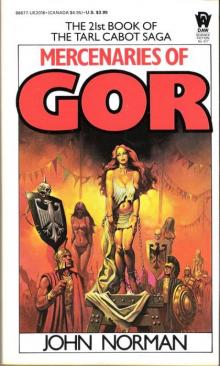 Mercenaries of Gor coc-21
Mercenaries of Gor coc-21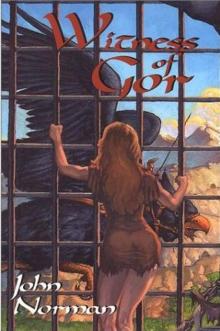 Witness of Gor coc-26
Witness of Gor coc-26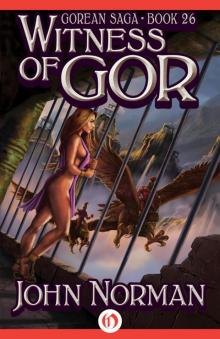 Witness of Gor
Witness of Gor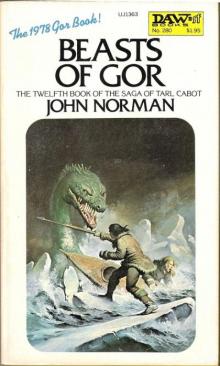 Beasts of Gor coc-12
Beasts of Gor coc-12 Rebels of Gor
Rebels of Gor Mariners of Gor cog[oc-30
Mariners of Gor cog[oc-30 The King th-3
The King th-3 Captive of Gor coc-7
Captive of Gor coc-7 The Captain th-2
The Captain th-2 Vagabonds of Gor coc-24
Vagabonds of Gor coc-24 Explorers of Gor
Explorers of Gor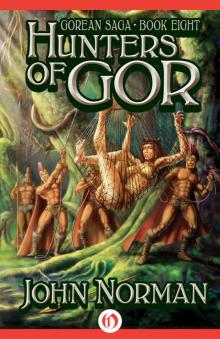 Hunters of Gor
Hunters of Gor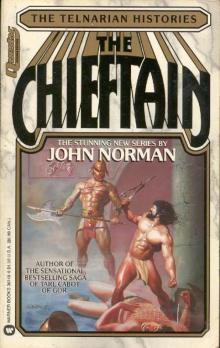 The Chieftan th-1
The Chieftan th-1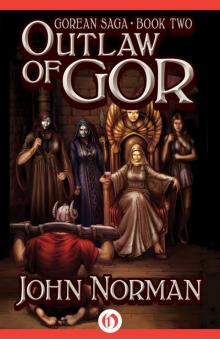 Outlaw of Gor
Outlaw of Gor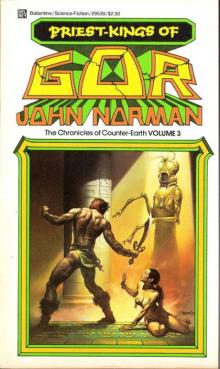 Priest-Kings of Gor coc-3
Priest-Kings of Gor coc-3 Norman Invasions
Norman Invasions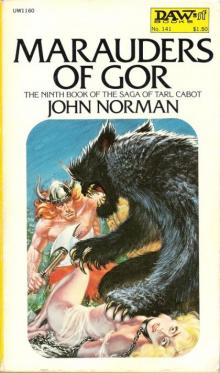 Marauders of Gor coc-9
Marauders of Gor coc-9 Kur of Gor coc-28
Kur of Gor coc-28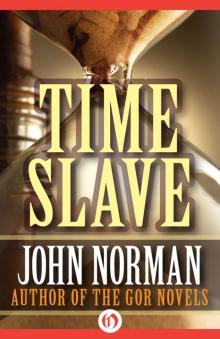 Time Slave
Time Slave The Chieftain
The Chieftain Kur of Gor
Kur of Gor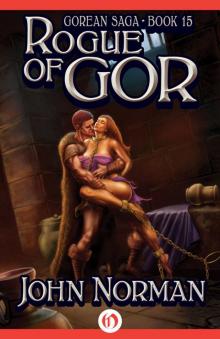 Rogue of Gor
Rogue of Gor The Totems of Abydos
The Totems of Abydos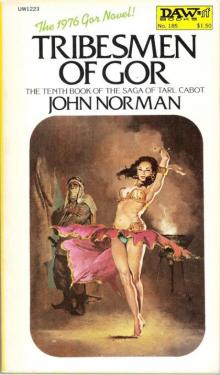 Tribesmen of Gor coc-10
Tribesmen of Gor coc-10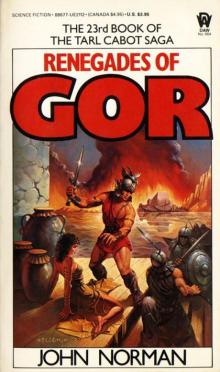 Renegades of Gor coc-23
Renegades of Gor coc-23 The King
The King Tarnsman of Gor
Tarnsman of Gor The Usurper
The Usurper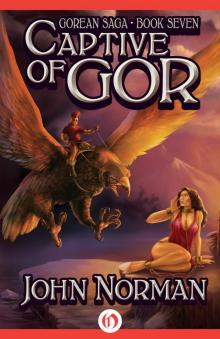 Captive of Gor
Captive of Gor Conspirators of Gor
Conspirators of Gor Smugglers of Gor
Smugglers of Gor Savages of Gor
Savages of Gor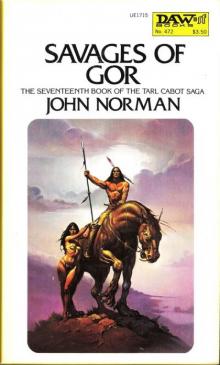 Savages of Gor coc-17
Savages of Gor coc-17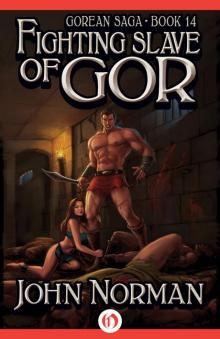 Fighting Slave of Gor
Fighting Slave of Gor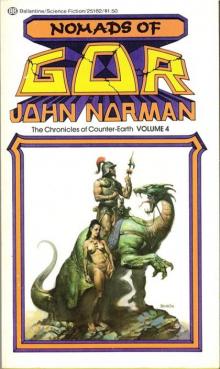 Nomads of Gor coc-4
Nomads of Gor coc-4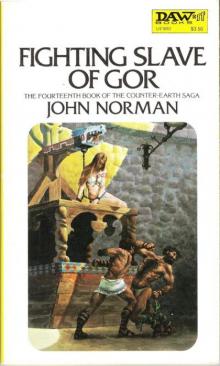 Fighting Slave of Gor coc-14
Fighting Slave of Gor coc-14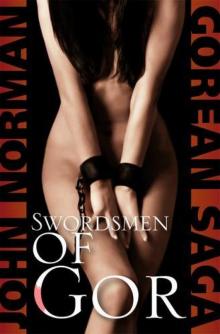 Swordsmen of Gor cog[oc-29
Swordsmen of Gor cog[oc-29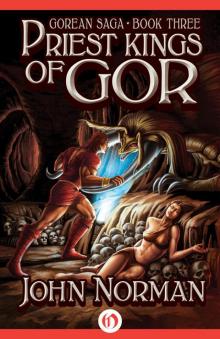 Priest-Kings of Gor
Priest-Kings of Gor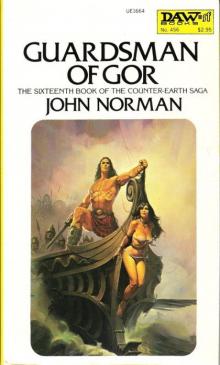 Guardsman of Gor coc-16
Guardsman of Gor coc-16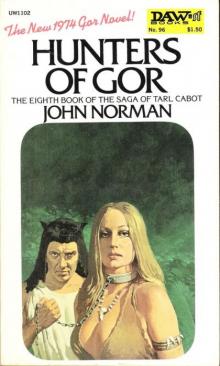 Hunters of Gor coc-8
Hunters of Gor coc-8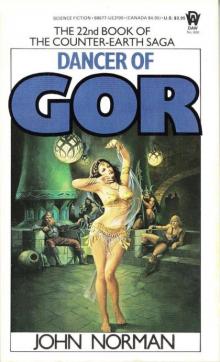 Dancer of Gor coc-22
Dancer of Gor coc-22 Prize of Gor coc-27
Prize of Gor coc-27 Conspirators of Gor cog[oc-31
Conspirators of Gor cog[oc-31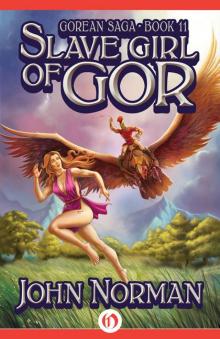 Slave Girl of Gor
Slave Girl of Gor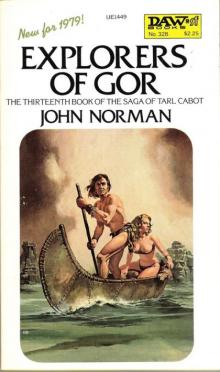 Explorers of Gor coc-13
Explorers of Gor coc-13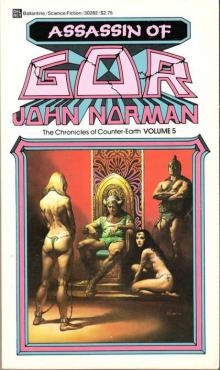 Assassin of Gor coc-5
Assassin of Gor coc-5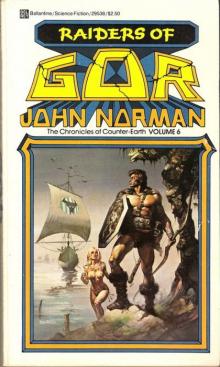 Raiders of Gor coc-6
Raiders of Gor coc-6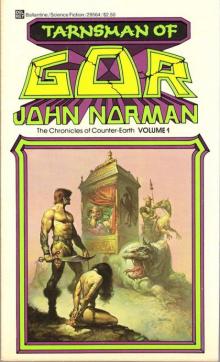 Tarnsman of Gor coc-1
Tarnsman of Gor coc-1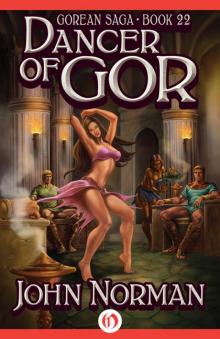 Dancer of Gor
Dancer of Gor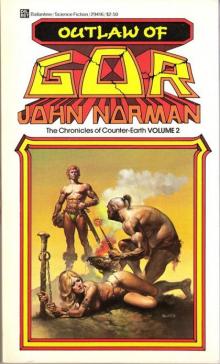 Outlaw of Gor coc-2
Outlaw of Gor coc-2 Guardsman of Gor
Guardsman of Gor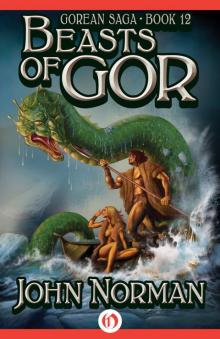 Beasts of Gor
Beasts of Gor Ghost Dance
Ghost Dance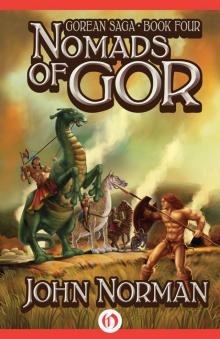 Nomads of Gor
Nomads of Gor Prize of Gor
Prize of Gor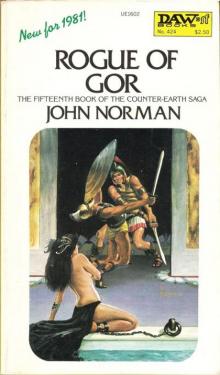 Rogue of Gor coc-15
Rogue of Gor coc-15 Swordsmen of Gor
Swordsmen of Gor